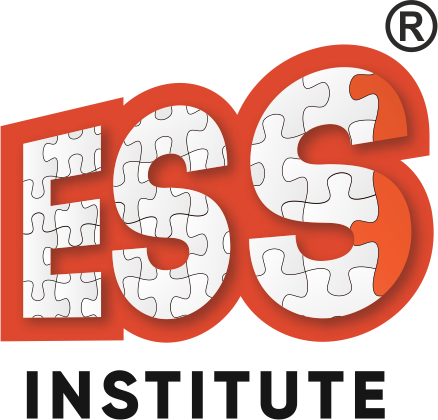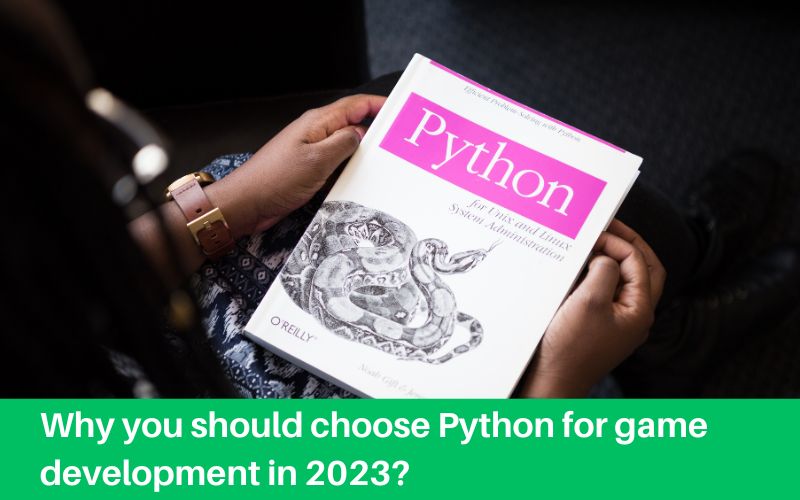Games have evolved into a platform for immersive experiences, interactive narrative, and never-ending entertainment in today’s quickly changing technological environment. Have you ever hoped that the ideas you have for video games would actually materialize? Don’t look elsewhere! Python, a flexible and user-friendly programming language, could help you putting your ideas better in reality.
Python game creation offers a universe of limitless opportunities where you may design intriguing quests, perplexing puzzles, or thrilling encounters. This blog post will lead you to develop your thought process better. No matter, whether you’re a coding enthusiast, a student eager to learn, or a seasoned developer exploring new horizons.
By utilizing Pygame or some more potent gaming libraries specialized to game development, you’ll learn how to generate vivid images, manage user input, integrate game mechanics, and bring your games to life with outstanding visual effects and interesting game play. Python allows you to express yourself through the immersive medium of gaming, whether it’s simple arcade classics, sophisticated RPGs, or even avant-garde experimental games.
However, game development entails more than just writing code. It is a type of interdisciplinary art that combines technological talents with imagination, design, and storytelling. Along the process, you’ll learn how to think like a game designer by leveraging Python’s flexibility to create exciting game play, fair challenges, and unforgettable experiences. You’ll experiment with visual effects, character motions, and immersive audioscapes to captivate your players.
Experts from a Python Course institute in Delhi explains about python game development below
Basic Steps involved in Game development
Certainly! Here are five simple steps to create games with Python:
- Plan and concept: Specify the game concept, gaming mechanics, and rules.
- Implement the main game logic, including objects, states, and rules, in code.
- Capture and process user input: Capture and process user input in order to operate the game.
- Add graphics and audio: To add images and audio to the game, use a library like Pygame.
- Test and iterate: Test the game thoroughly, repair any errors, and iterate on gameplay and features.
These stages give a condensed overview of the Python game development process. Keep in mind that depending on the intricacy of your game, each stage may necessitate extra sub-steps and considerations.
Python Libraries for Game Development
In Python game development, many libraries play critical roles in various areas of the game developing process. Each library has its own importance and offers unique features to help developers. Let’s list out some of these gaming libraries and see how they will help you guys out.
These are just a few of the numerous libraries available for Python game development that we have listed for you. Each library has its own set of functions and features that cater to different needs and tastes. The importance of these libraries may be seen in their capacity to expedite the development process, simplify complicated processes, and offer developers with the tools they need to build compelling and immersive gaming experiences. You may select the ideal library for your needs and tastes based on the exact requirements of your game.
1) Pygame:
I) Importance: Pygame is one of the most popular Python libraries for game development. It has a full collection of tools and features for developing 2D games.
II) Capabilities and Usage: Pygame provides graphics rendering, audio processing, input handling, collision detection, and sprite management. It makes game production easier by offering a high-level interface for dealing with game objects, events, and user interactions.
2) Panda3D:
I) Importance: Panda3D is a sophisticated open-source game engine and framework recognized for its 3D visuals and physics simulation capabilities.
II) Capabilities and Usage: Panda3D has several capabilities, such as powerful rendering techniques, scene management, character animation, and physics simulations. It includes a complete collection of tools for generating complicated and aesthetically attractive 3D models.
3) Arcade:
I) Importance: Arcade is a user-friendly library for designing 2D games with an emphasis on simplicity and ease of use.
II) Features and Usage: Arcade provides a simple and easy interface for managing game elements such as sprites, sound, and user input. It has built-in functionality for managing collisions, physics simulations, and 2D graphics rendering. Arcade is a good alternative for the very beginners with game developers and those who want a simple approach to game production.
4) The Pyglet:
I) Importance: Pyglet is yet another sophisticated game creation library that focuses on multimedia processing, such as graphics, audio, and input.
II) Functions and Usage: Pyglet has a wide range of multimedia functions, such as OpenGL graphics rendering, audio playing, and keyboard/mouse input management. It provides a versatile and fast API for creating games with great images and immersive audio.
5) Kivy:
I) Importance: Kivy is a cross-platform Python framework that allows the development of multitouch apps and games for a variety of platforms such as desktop, mobile, and online.
Kivy simplifies game creation by providing a broad collection of UI components, touch gestures, and multiplatform compatibility. It provides a simple declarative language for creating user interfaces, making it ideal for producing games with touch-based interactions.
Why is Python a Reliable Game Development Language?
1) Readability and Simplicity: Discover why Python’s simple syntax and understandable code make it a good choice for both novice and expert game developers. Discover how Python’s simplicity allows for speedier development and simpler collaboration.
2) Cross-Platform Compatibility: Showcase Python’s portability by demonstrating how Python games can operate on a range of platforms, including Windows, macOS, Linux, and even mobile devices.
3) Extensive Ecosystem: Investigate Python’s vast ecosystem, which includes a plethora of libraries, tools, and resources that speed up game development. Python’s ecosystem covers everything from asset generation to artificial intelligence.
Fascinating Facts and Hidden Gems
1) PySoy: Learn about PySoy, a little-known gem that allows for game creation with an emphasis on physics simulation and realistic visuals rendering. Discover PySoy’s capabilities for developing physics-based games and simulations.
2) Ren’Py: Dive into the world of visual novels with Ren’Py, a specialised Python library that makes it easy to create interactive tales with rich dialogue, branching plots, and engaging images.
3) PyWeek: Take on the thrilling PyWeek challenge, a bi-annual game creation competition in which players have only one week to create a game from the ground up using Python. Discover the joy of joining a thriving community of game makers and showing your talents.
Conclusion
Python game programming opens up a world of possibilities when imagination meets technical skill. Here we have looked at the key libraries that make Python an excellent choice for game development, focusing on Pygame, Panda3D, and Arcade. We’ve also investigated Python’s dependability, cross-platform interoperability, and expansive ecosystem. Furthermore, we’ve dived into some hidden gems like PySoy and Ren’Py, as well as presented intriguing information like the PyWeek challenge. You’re now ready to go on an adventurous trip into the enthralling world of game creation, armed with Python and your creative spirit. So, embrace it.
Learn Complete Python game development from trainers at top Python institute in Dwarka in both online and offline course batches

